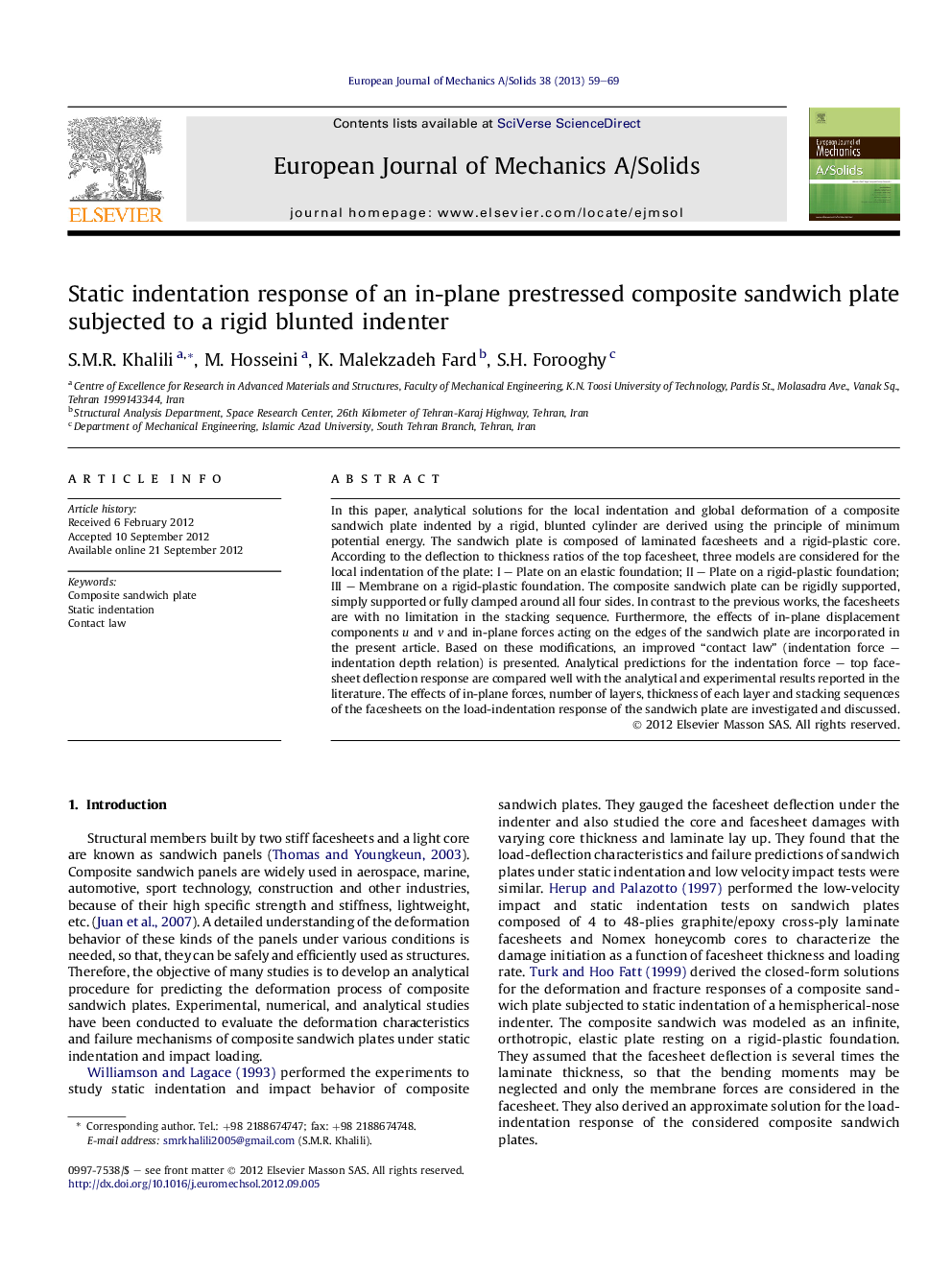| Article ID | Journal | Published Year | Pages | File Type |
|---|---|---|---|---|
| 774243 | European Journal of Mechanics - A/Solids | 2013 | 11 Pages |
In this paper, analytical solutions for the local indentation and global deformation of a composite sandwich plate indented by a rigid, blunted cylinder are derived using the principle of minimum potential energy. The sandwich plate is composed of laminated facesheets and a rigid-plastic core. According to the deflection to thickness ratios of the top facesheet, three models are considered for the local indentation of the plate: I – Plate on an elastic foundation; II – Plate on a rigid-plastic foundation; III – Membrane on a rigid-plastic foundation. The composite sandwich plate can be rigidly supported, simply supported or fully clamped around all four sides. In contrast to the previous works, the facesheets are with no limitation in the stacking sequence. Furthermore, the effects of in-plane displacement components u and v and in-plane forces acting on the edges of the sandwich plate are incorporated in the present article. Based on these modifications, an improved “contact law” (indentation force – indentation depth relation) is presented. Analytical predictions for the indentation force – top facesheet deflection response are compared well with the analytical and experimental results reported in the literature. The effects of in-plane forces, number of layers, thickness of each layer and stacking sequences of the facesheets on the load-indentation response of the sandwich plate are investigated and discussed.
► Contact law for static indentation of sandwich plate is studied. ► The lay-ups of the facesheets are with no limitation in the present contact law. ► The in-plane displacements u and v are taken into account in the present contact law. ► The in-plane initial forces are incorporated in the present contact law. ► The positive in-plane initial forces decrease the indentation.
